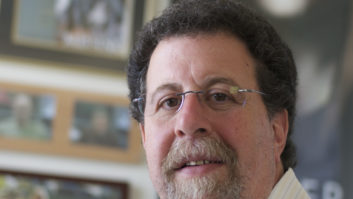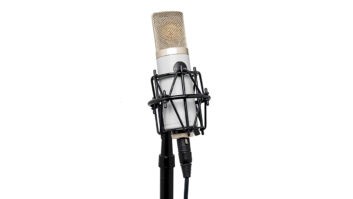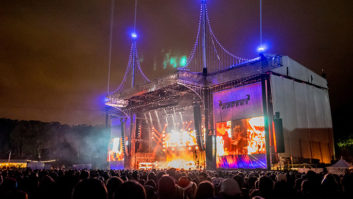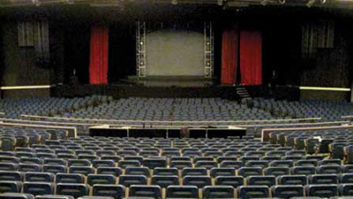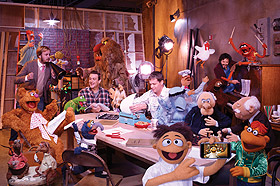
Photo: Courtesy Disney Pictures
When an actor’s foot is made out of felt, what does he sound like going up a flight of stairs? If your actor is green and has friends named “Fozzie” and “Miss Piggy,” he can’t sound like the rest of us—but if he’s out in the real-world world, he can’t be too far off, either.
Muppets aren’t like regular folk in a lot of ways, but for the sound team on Disney’s The Muppets, the challenge was how to find that balance between life in their world and life in ours—mostly the latter. “That was the direction we got from our director, James Bobin, and our picture editor, James Thomas,” explains re-recording mixer Beau Borders, who teamed with veteran mixer Kevin O’Connell at Universal Sound Studios Stage 6. “They wanted everything to feel low-tech, but definitely real world. They didn’t want you to ever really think that you were looking at a movie.”
Bobin was specifically looking for a sound that harkened back to the classic Muppet movies of the ’70s and ’80s. “Those are pretty sparse, sound-wise,” notes 424 Post supervising sound editor Kami Asgar. “They didn’t have a lot going on,” adds fellow editor Sean McCormack. “Whatever production had was pretty much it, and James didn’t want to go too far off that path—at least to start with.”

From left: Sean McCormack, Erin Oakley, Kevin O’Connell, Brett “Snacky” Pierce, Lisa Jamie, James Thomas, Alan Baumgarten (additional editor), Kami Asgar and Beau Borders
Says O’Connell, “Beau and I met with James very early on, and the very first thing he said to us was that he didn’t want a slick, modern sound job. He really wanted it to have that ’80s feel.” So O’Connell met with Asgar and McCormack, and the music department to make sure everyone was on the same page in their approach. “Kevin brought everybody together and made certain we all understood that we were working on a movie, not just a song on the soundtrack,” Asgar says. “This was a movie, and it had to play into a movie.”
Foley and sound effects had to match the world the Muppets inhabit, even though their bodies don’t quite match those of the humans with whom they interact. Notes Asgar: “When you see a frog that’s made of cloth, you expect it to sound a certain way. So we did a lot of playing around with sounds, trying to figure out, ‘Okay, it can’t be slappy like regular skin because it’s felt. But at the same time, it’s gotta make a sound.’ It’s a matter of making it sound realistic and not letting it be overly cartoonish.”
“If a Muppet falls down, in reality it probably only weighs about one-and-a-half pounds, so it’s not really going to make a sound,” Borders explains. “But if we went over the top, there would be this big, crazy commotion. So we would go for a real body fall; we wanted to keep everything feeling like it was in the real world and that it was a production recording.”
Production sound mixer Steve Cantamessa did, in fact, provide the spoken voices of the Muppets, nearly all of which were performed live on set by the talented Muppeteers themselves, recorded through headgear-mounted mics. “The only time they ever went in for ADR was for a performance change or a line change,” says O’Connell.
The Muppeteers, all skilled in improv, also provided multiple line reads, placed on separate tracks by dialog editors Erin Oakley and Steve G.G. Haller, for instances where Bobin might wish to opt for something different during the mix. “James would say, ‘Oh, that’s kind of silly. Can we have him say something else?’” recalls Asgar. “And Erin would have that all prepped and ready to go.”
O’Connell credits Oakley for her skillful wrangling of countless dialog tracks, particularly for scenes like the opening number, which features 50-plus characters, each with their own dialog and Foley tracks, allowing him to maintain an identity for each in the mix. “Because the Muppets move all over the screen while they’re singing, we panned them wherever they took us— while they were singing, dancing and talking.”
He and Borders went to great efforts to seamlessly transition from dialog portions of scenes to musical numbers to songs written by composer/music supervisor Bret McKenzie, and recorded by McKenzie, engineer Joseph Magee and scoring mixer Casey Stone. Additional vocals for the songs were recorded by Mickey Petralia and Ed Mitchell. “The filmmakers really wanted that transition to be almost seamless so that it didn’t feel like we just turned on the music,” O’Connell says. “The challenge there was to make the recorded production dialog blend with the recorded vocal dialog,” keeping McKenzie’s wonderfully Muppety tunes truly alive in the film. “Because the songs are really the stars of this movie.”
